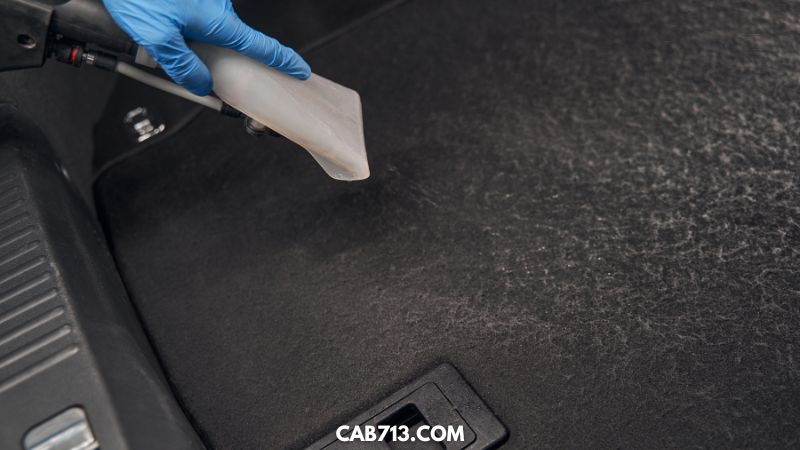Introduction
If you’re looking for a way to keep your car’s paint looking shiny and new, then you may want to consider using a clay bar. A clay bar is a specialized cleaning tool that can be used to remove contaminants from your car’s paint surface. These contaminants can include things like tree sap, tar, and industrial fallout. A clay bar can help to keep your car’s paint looking shiny and new by removing these contaminants and restoring the smoothness of the paint surface.
What is Clay Bar Made Of
A clay bar is a popular auto detailing tool that is used to remove bonded contaminants from the paint surface of a vehicle. Made of an elastic, malleable resin compound, clay bars are effective at removing things like tar, tree sap, and bird droppings that can bond to the paint and cause damage. In addition to removing these types of contaminants, clay bars can also help to restore shine and luster to dull, oxidized paint.
If you are looking for a way to keep your car’s paint clean and shiny, using a clay bar is a great option. Here are a few tips on how to use a clay bar.
How to Use a Clay Bar
1. Start with a clean car. Wash and dry your car before starting to clay bar it. This will help to remove any loose dirt and debris that could scratch your car’s paint surface during the claying process.
2. Inspect your car’s paint surface for areas that feel rough or have visible contaminants. These are the areas that will benefit most from claying.
3. Knead the clay bar to soften it before using. This will help it to conform to the contours of your car’s paint surface and remove contaminants more effectively.
4. Spray a small amount of clay lubricant onto the area you will be working on. This will help to prevent the clay bar from sticking to or scratching your car’s paint.
5. Gently glide the clay bar over the lubricated area in a back-and-forth motion. You should feel the contaminants being removed from your car’s paint surface as you do this.
6. Wipe away any residual clay lubricant with a clean microfiber cloth.
7. Inspect your car’s paint surface to make sure all of the contaminants have been removed. If not, repeat steps 4-7 until the desired result is achieved.
Claying your car’s paint surface is a great way to remove contaminants and keep your car looking its best. Be sure to follow the steps above carefully to avoid damaging your car’s paint. If you have any questions or concerns, feel free to contact a professional detailer for assistance.
Clay Bar Brand Recommendations
There are many different brands of clay bars on the market, but not all of them are created equal. Here are a few of our favorites:
- Meguiar’s Smooth Surface Clay Kit
- 3M Perfect-It III Grey Cleaning Clay
- Chemical Guys CLY_113 OG Clay Bar & Lubber Synthetic Lubricant Kit
When Should I Clay Bar My Car
The answer to this question depends on a few factors, such as how often you wash your car and what kind of environment it’s typically exposed to. If you live in an area with a lot of traffic or industrial fallout, you may want to clay bar your car more frequently. On the other hand, if you only wash your car once a week or so, you may not need to clay bar it as often.
What Are The Benefits of Using a Clay Bar

There are several benefits to using a clay bar on your car’s paint surface.
Remove contaminants
As we mentioned, one of the main benefits of using a clay bar is that it can remove contaminants from your car’s paint surface. These contaminants can dull the paint and make it more difficult to clean in the future.
Restore smoothness
Another benefit of using a clay bar is that it can restore the smoothness of your car’s paint surface. Over time, contaminants can build up on the paint and make it feel rough. A clay bar can help to remove these contaminants and restore the smoothness of the paint.
Improve shine
Finally, using a clay bar can help to improve the shine of your car’s paint. Contaminants can dull the paint and make it less shiny. A clay bar can help to remove these contaminants and restore the shine to your car’s paint.
What to look for in a clay bar
When you are shopping for a clay bar, there are a few things to keep in mind.
First, make sure that the clay bar is designed for use in cars. Some clay bars are designed for other surfaces, such as boats or RVs, and may not be effective on car paint.
Second, consider the size of the clay bar. Some clay bars are large enough to cover an entire car, while others are smaller and meant for spot cleaning. Choose the size that best fits your needs.
Finally, consider the price of the clay bar. Clay bars can range in price from a few dollars to over $100. Choose the clay bar that fits your budget and needs.
The grade of clay is important to consider when restoring your car, as each grade will have different capabilities. Fine and medium clays can be used on any paint type with minimal risk of marring or scratching the surface – this means they’re best suited for newer cars that may still retain some protection from past damage due to their age (such as rust). Medium-grade products should only ever be applied where there’s visible contamination; while these levels aren’t always possible avoidable at times like polishing work done improperly then chances are better than not enough care was taken during preparation which could lead you down an unwanted path toward scratchiness later on.
If your paint is in dire need of some attention and you don’t mind taking a bit more time during the process, then a clay bar treatment is worth considering. Just remember that even if it’s called “clay” – these products aren’t toys and should be used with care. Improper use can cause serious damage to your paint, so be sure to read the instructions that come with your kit carefully before beginning.
Final Thoughts
A clay bar can be a great way to keep your car’s paint clean and shiny. When choosing a clay bar, keep in mind the size of the bar and the type of paint you have. Clay bars can range in price, so choose one that fits your budget. With a little care and regular use, a clay bar can help keep your car looking its best.

I’ve been a working drummer for 35+ years now and have lots of experience (good and bad) with lots of different gear. I’ll be writing how-to articles, comparison guides, FAQs, etc.., on topics ranging from acoustic drums, hardware, cymbals and accessories. I plan to post some fun video as well! I hope you’ll find this website useful in your quest for drumming knowledge:)






